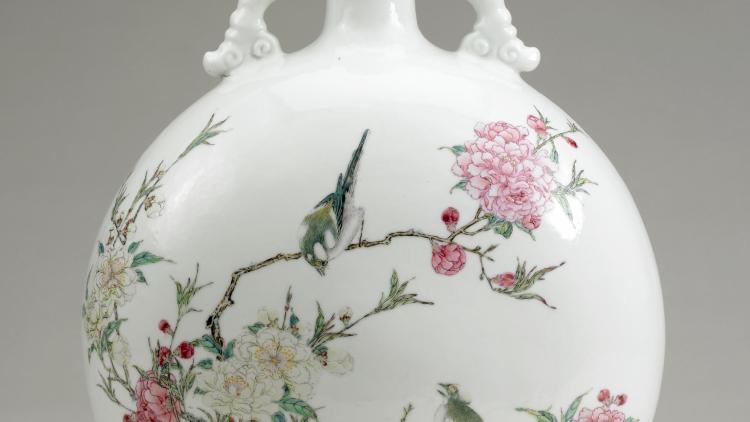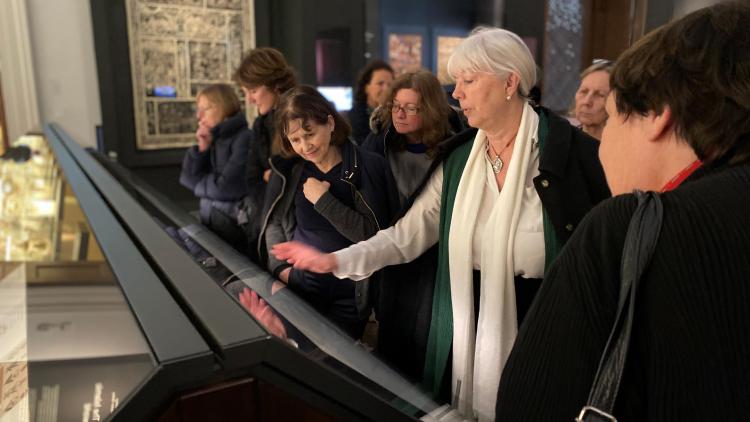MPhil/PhD in History of Art and/or Archaeology


Key information
- Duration
- 4 years (full-time)
- Start of programme
- September intake only
- Attendance mode
- Full-time or part-time
- Location
- On campus
- Fees
-
Home (full-time): £5,055 per year
International (full-time): £23,390 per year - Entry requirements
-
It is expected that candidates will already have completed postgraduate taught courses in the form of a taught Masters degree (an MA, MSc or LLM, for example) and obtained good results before starting a PhD programme. Applicants will also need one reference. International applicants should also see Doctoral School English language requirements
Course overview
Undertaking a research degree is an intense and personally rewarding experience.
A full-time doctoral student has three years to complete a full draft of their thesis and then a further one year for writing up (known as a 3+1 degree). The department offers a dynamic and collegiate atmosphere to support research students in all dimensions of their work – from developing the individual thought process, to information-sharing on archives or conferences, to refining presentation skills, to building social and professional networks.
Research degrees are generally undertaken by individuals who aim to become professionals in the field of art history and/or archaeology, whether as academics who carry out research and teach in universities or as curators or educators in museums, libraries or archives, or in any number of other related areas such as academic publishing or even the commercial art world.
Embarking on a research degree is not just about the qualification but also about developing as a person and a professional so as to be able to contribute to the multitude of discourses in, and perhaps also far beyond, the discipline.
Why study MPhil/PhD in History of Art and/or Archaeology at SOAS
Beyond the distinctive intellectual environment of SOAS, doctoral researchers are generally drawn to work with an individual supervisor who is an expert in a particular field and often known for a particular critical approach. Many of our current students completed MA degrees at SOAS during which time they took courses with and got to know members of academic staff in the department, experiences that encouraged them to consider a research degree.
Prospective applicants may wish to browse through the staff profiles for updated biographies and publications. Some supervisors prefer their research students to have trained under them at MA level even if they have an MA in art history or archaeology from elsewhere. Our department generally makes about 10-20 offers each year.
Our programme has one of the highest completion rates at SOAS and indeed in the sector: we graduate about 0.7 doctorates each year, within the 3+1 year framework, per full time member of staff.
Structure
The year-by-year requirements for full-time MPhil and PhD research students are as follows:
Year 1
During Year 1, the student refines the research proposal and decides in conjunction with their Supervisory Committee whether the research project should be directed towards the goal of an MPhil or a PhD degree. Students who wish to work towards the PhD must pass the process of upgrading registration from MPhil to PhD candidacy. They must provide the following to the Supervisory Committee by the May deadline (the exact date is set each year by SOAS Registry):
- Written work for the HAA Research Skills (15 PAR H061) Term 1 obligatory course (5,000 words)
- Draft chapter(s) (15,000 words)
- A chapter outline and a time plan for each chapter’s completion
- A year 2 fieldwork and research plan
- A bibliography of relevant sources
Year 2
The student undertakes fieldwork or data collection. Regular reports must be submitted to their supervisor, via email or in person. A second chapter will normally be completed.
Year 3
Students complete a full draft of their thesis. They are required to undertake the following:
- Formal presentation of fieldwork in School of Arts Fieldwork Symposium, usually held in March
- Submission of draft thesis by 15 September, along with a Completed Approval Form. If the Supervisory Committee is satisfied that the draft thesis can be developed into a thesis of a quality worthy for submission for examination in the subsequent academic year, the student will be allowed to register on Extension of Writing-up (Continuation) Status for year 4.
Year 4
Students complete and submit their thesis. At the viva (thesis examination), the examiners aim to confirm that:
- they have satisfied themselves that the thesis is genuinely the work of the candidate
- the thesis forms a distinct contribution to the knowledge of the subject, and affords evidence of originality by (i) the discovery of new facts and/or (ii) the exercise of independent critical power
- the thesis is satisfactory as regards literary presentation
- the thesis is of a standard to merit publication in whole or in part or in a revised form.
See SOAS Doctoral School for further details about MPhil/PhD processes.
Important notice
The information on the website reflects the intended programme structure against the given academic session. The modules are indicative options of the content students can expect and are/have been previously taught as part of these programmes.
However, this information is published a long time in advance of enrolment and module content and availability is subject to change.
Teaching and learning
Research topics
Research topics can be considered under three headings: first, historical and contextual studies of the traditions, forms and artists of the past; second, the study of contemporary and popular visual arts; and third, the contribution of Asian and African art studies to the development of a comparative philosophy of art and archaeology.
The opportunities for original and innovative research are therefore extremely wide-ranging. This is an area in which cooperation with scholars in Asia and Africa is possible to mutual advantage. All staff are simultaneously attached as art historians or archaeologists to the department and as regional specialists to their appropriate regional centre at SOAS.
Supervision and training
The teachers of the department offer supervision in most aspects of the visual arts, architecture, material culture and archaeology of Asia and Africa, leading to the MPhil or PhD. Both degrees are examined by thesis, normally up to 60,000 words for the MPhil and 100,000 for the PhD. According to university regulations the MPhil 'shall be either a record of original work or an ordered and critical exposition of existing knowledge', while the PhD 'must form a distinct contribution to the knowledge of the subject and afford evidence of originality ... either by the discovery of new facts or by the exercise of independent critical power'.
At SOAS, the necessary training, supervision, research and writing takes a minimum of two years for the MPhil and a minimum of three for the PhD. Students will be registered initially for the MPhil but those wishing to take the PhD may be upgraded depending on the progress and scope of their work.
A supervisor will be appointed from among the teachers of the department according to the nature of the proposed research. The supervisor is responsible for providing guidance as needed. The progress of the student will normally be monitored by a supervisory committee comprising the supervisor and one other teacher, normally a specialist in an area related to the field of study.
Application requirements
It is expected that candidates will already have completed postgraduate taught courses in the form of a taught Masters degree (an MA, MSc or LLM, for example) and obtained good results before starting a PhD programme.
Students are expected to be sufficiently familiar with the subject and to have their own ideas about the research they wish to do. They are required to submit an outline proposal with their application. This should be at least 1,500 words and should indicate the treatment of research intended and the sources of the materials to be used.
Proposals must indicate the scope and significance of the study as well as the feasibility and intended approach. The responsibility of the supervisor begins with advice intended to help develop the student's ideas into an acceptable research project. Staff will offer advice on developing a proposal and welcome enquiries from potential applicants.
SOAS Library
SOAS Library is one of the world's most important academic libraries for the study of Africa, Asia and the Middle East, attracting scholars from all over the world. The Library houses over 1.2 million volumes, together with significant archival holdings, special collections and a growing network of electronic resources.
Employment
Students in the School of Arts develop a critical and theoretically informed approach to global arts and culture. In addition to an intercultural awareness and practical expertise, graduates gain a wide portfolio of transferable skills which are especially sought after in the creative and cultural industries.
Recent graduates have been hired by:
- Christie’s
- Christine Park Gallery
- Crisis
- Design Museum
- Hong Kong Museum Of Art
- India Foundation For The Arts
- Japanese Gallery
- Museum of East Asian Art
- Music in Detention
- National Gallery
- Pan Arts
- People Projects Culture & Change
- Roundhouse Trust
- Somerset House Trust
- Songlines Magazine
- Sotheby's
- South Asian Art UK
- Stratford Circus Arts Centre
- Taiwan Embassy
- The Alliance for Global Education
- The British Embassy
- The National Museum Of Korea
- The Royal Collection
- Victoria and Albert Museum
Find out about our Careers Service.











